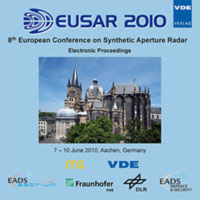Focusing results and analysis of advanced bistatic SAR experiments in spaceborne or airborne /airborne or stationary configurations
Konferenz: EUSAR 2010 - 8th European Conference on Synthetic Aperture Radar
07.06.2010 - 10.06.2010 in Aachen, Germany
Tagungsband: EUSAR 2010
Seiten: 4Sprache: EnglischTyp: PDF
Persönliche VDE-Mitglieder erhalten auf diesen Artikel 10% Rabatt
Autoren:
Wang, Robert; Loffeld, Otmar; Nies, Holger; Ortiz, Amaya Medrano (Center for Sensorsystems (ZESS), University of Siegen, Paul-Bonatz-Str. 9-11, 57068 Siegen, Germany)
Walterscheid, Ingo; Espeter, Thomas; Klare, Jens; Ender, Joachim H. G. (Fraunhofer Institute for High Frequency Physics and Radar Techniques, 53343 Wachtberg, Germany)
Inhalt:
This paper concentrates on the focusing results of several hybrid bistatic SAR experiments. The hybrid bistatic configurations are referred to the case that transmitter and receiver are mounted in different kinds of platforms, e.g., spaceborne/airborne, airborne/stationary, spaceborne/stationary, and so on. Recently, we have successfully performed several hybrid bistatic SAR experiments, i.e. TerraSAR/PAMIR, PAMIR/stationary, and TerraSAR/ stationary. In this paper, we will emphasize the imaging geometry, image analysis, and the frequency-domain focusing results.


